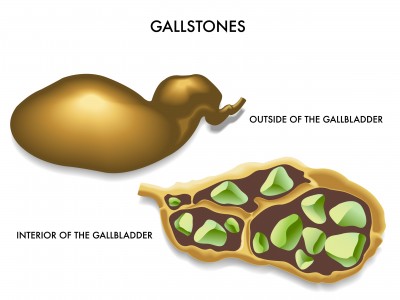10 gall stone facts
In this article, we will describe 10 key points about gall stones.
1. Definition
Gallstones are hardened deposits that form in the gallbladder, a small organ located beneath the liver. They are made up of cholesterol, bilirubin, and calcium salts.


Gall stones can precipitate pancreatitis (inflammation of pancreas gland), leading to severe pain in the upper central abdomen.
2. Variable
Gallstones can vary in size, ranging from as small as a grain of sand to as large as a golf ball. Some people may develop a single large stone, while others may have multiple smaller stones.
3. Cause
The exact cause of gallstones is not fully understood, but several factors can contribute to their formation. These include genetics, obesity, a high-fat diet, rapid weight loss, certain medications, and certain medical conditions such as liver disease or diabetes.
4. Asymptomatic
Gallstones often do not cause any symptoms and may go unnoticed. However, if a gallstone blocks the bile duct, it can lead to severe pain in the upper abdomen, known as a gallstone attack or biliary colic. The pain can be accompanied by nausea, vomiting, and yellowing of the skin and eyes (jaundice).
5. Who gets it
Gallstones are more common in women than in men. Hormonal changes during pregnancy and the use of hormonal contraceptives may increase the risk of gallstone formation in women. ‘Fat fertile women of 40’ is an old phrase to describe an at risk group.
6. Treatment
The treatment for gallstones depends on the severity of symptoms. In cases where there are no symptoms, treatment may not be necessary. However, if gallstones are causing pain or other complications, the most common treatment is the surgical removal of the gallbladder, known as cholecystectomy.
7. Non-surgical treatment
Options are available for individuals who cannot undergo surgery or prefer a non-invasive approach. These options include oral medications to dissolve the stones, extracorporeal shock wave lithotripsy (ESWL) to break up the stones using sound waves, and endoscopic procedures to remove or break up the stones.
8. Complications
Gallstones can lead to complications such as inflammation of the gallbladder (cholecystitis), inflammation of the pancreas (pancreatitis), and infection of the bile ducts (cholangitis). These conditions require immediate medical attention – including surgery to remove the gall bladder. This is usually done when the acute attack has settled down.
9. Prevention
Prevention strategies for gallstones include maintaining a healthy weight, eating a balanced diet low in fat and cholesterol, exercising regularly, and avoiding rapid weight loss or crash diets.
10. After gallbladder removal surgery
Most people can live a normal, healthy life without a gallbladder. The liver continues to produce bile, but it flows directly into the small intestine instead of being stored in the gallbladder.
Summary
We have described 10 gall stone facts. We hope it has been useful.

